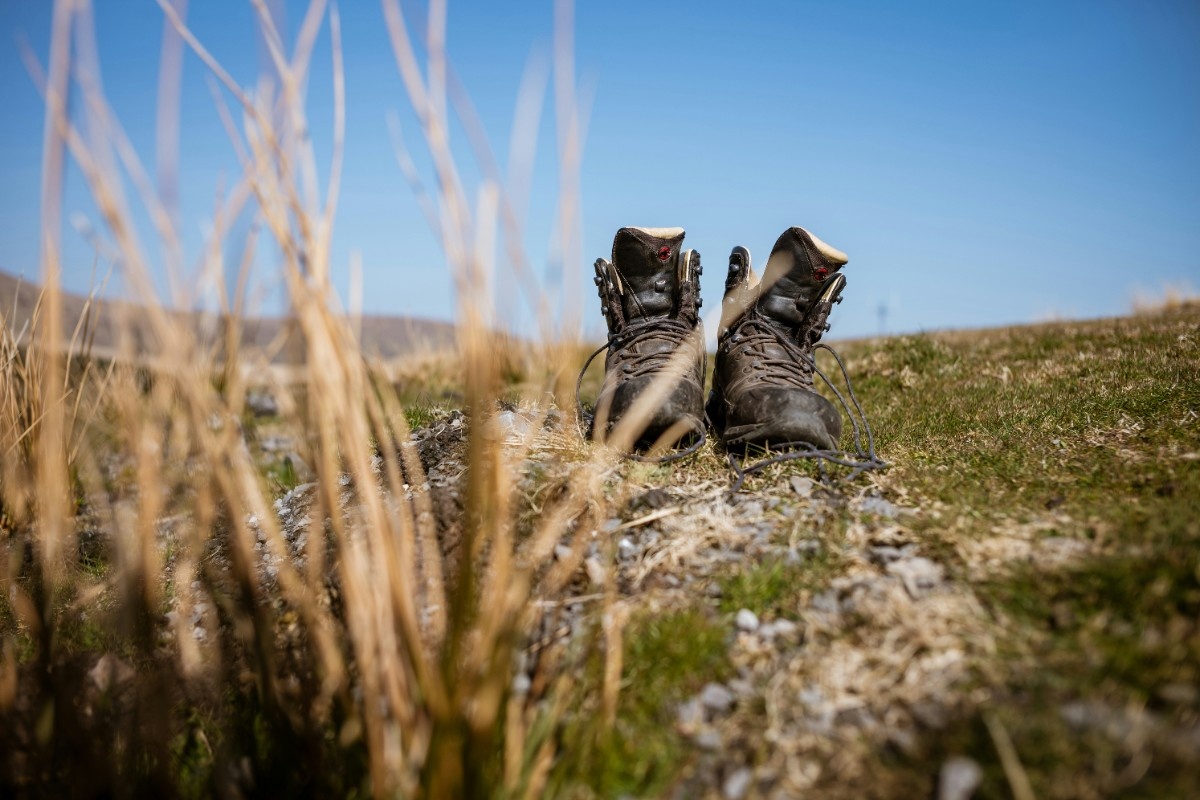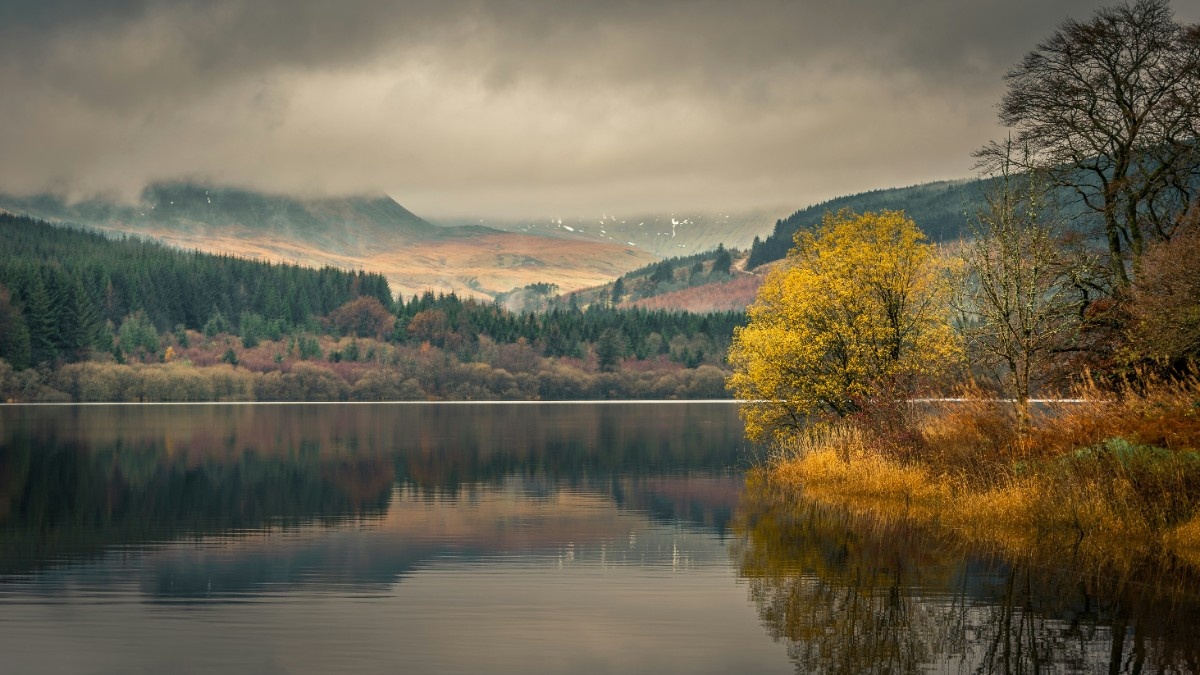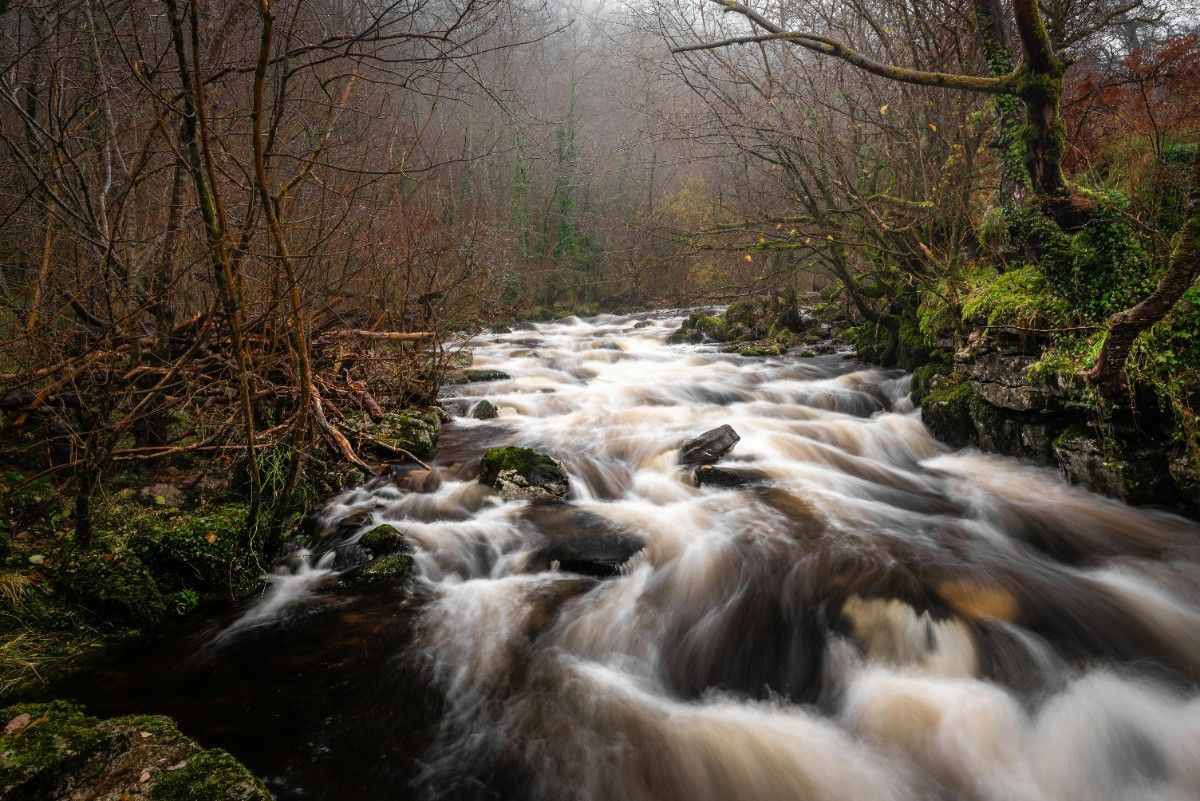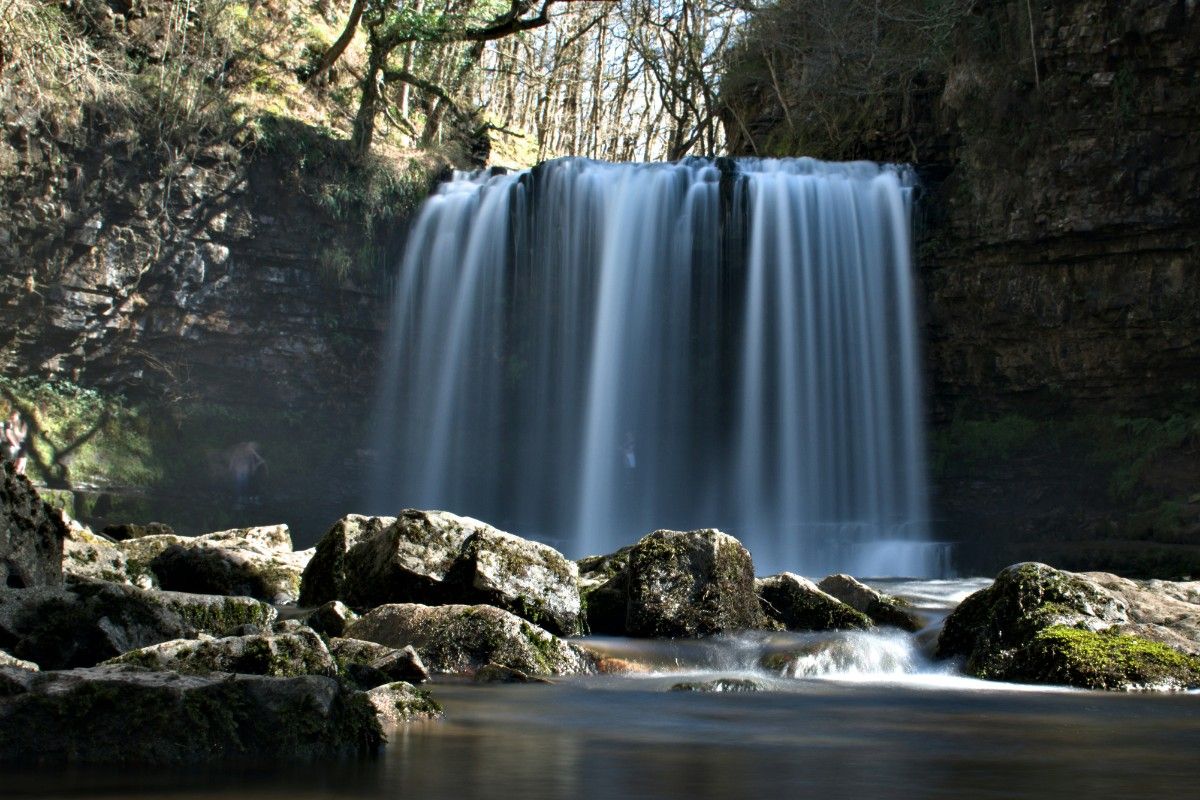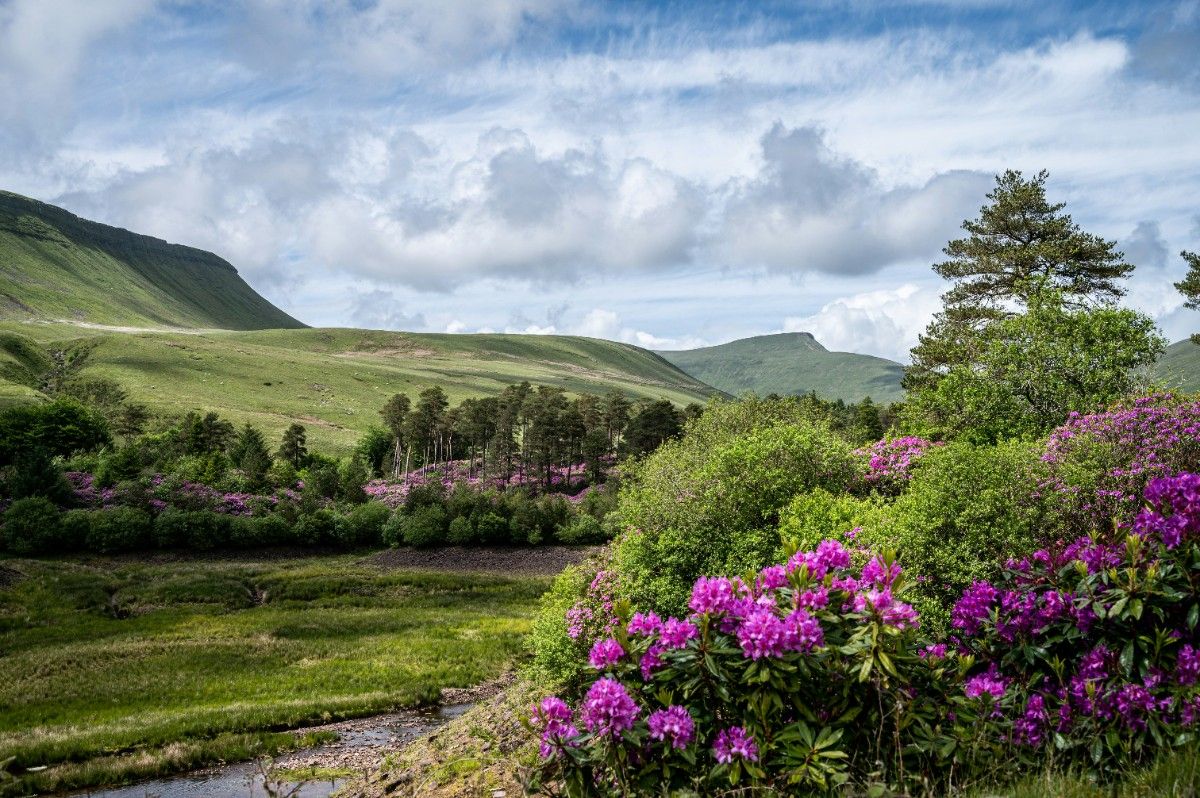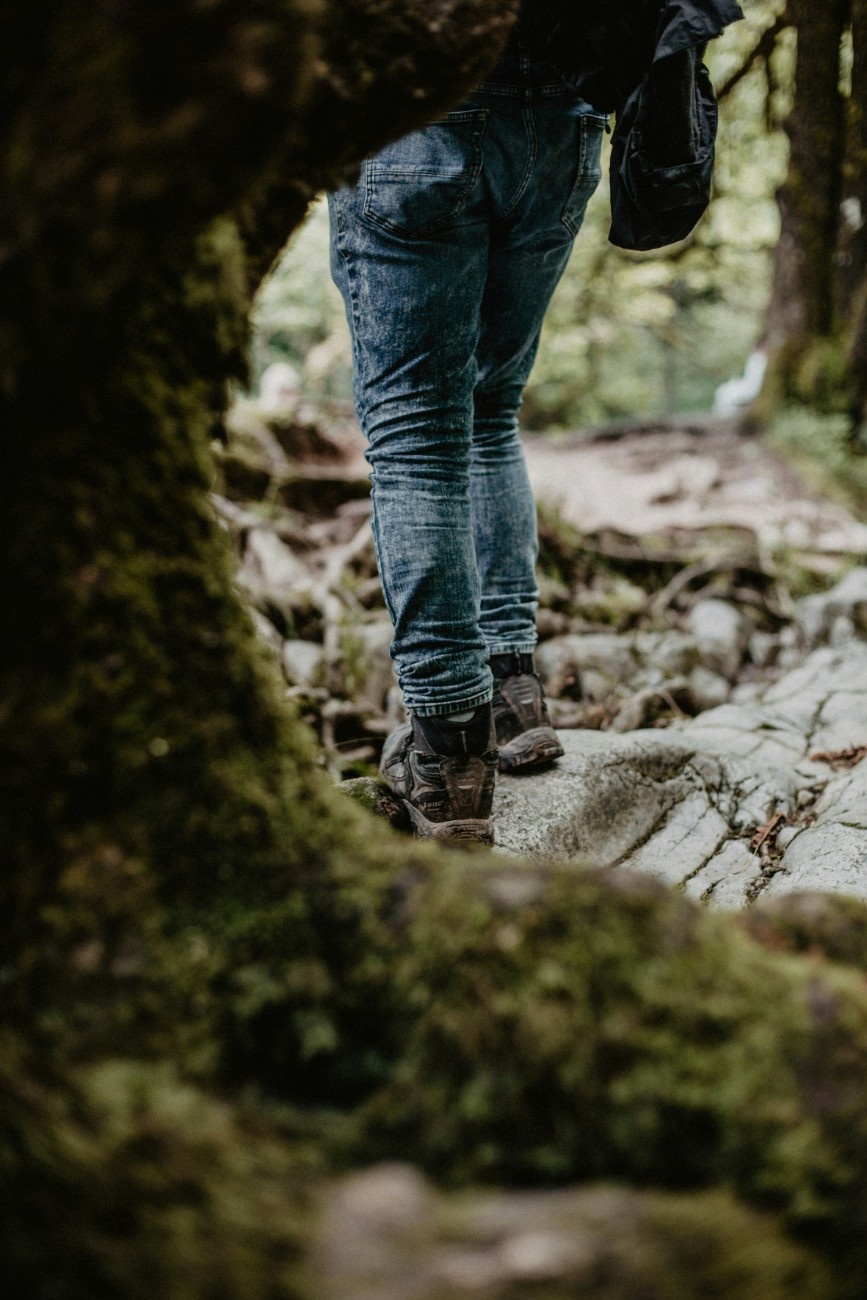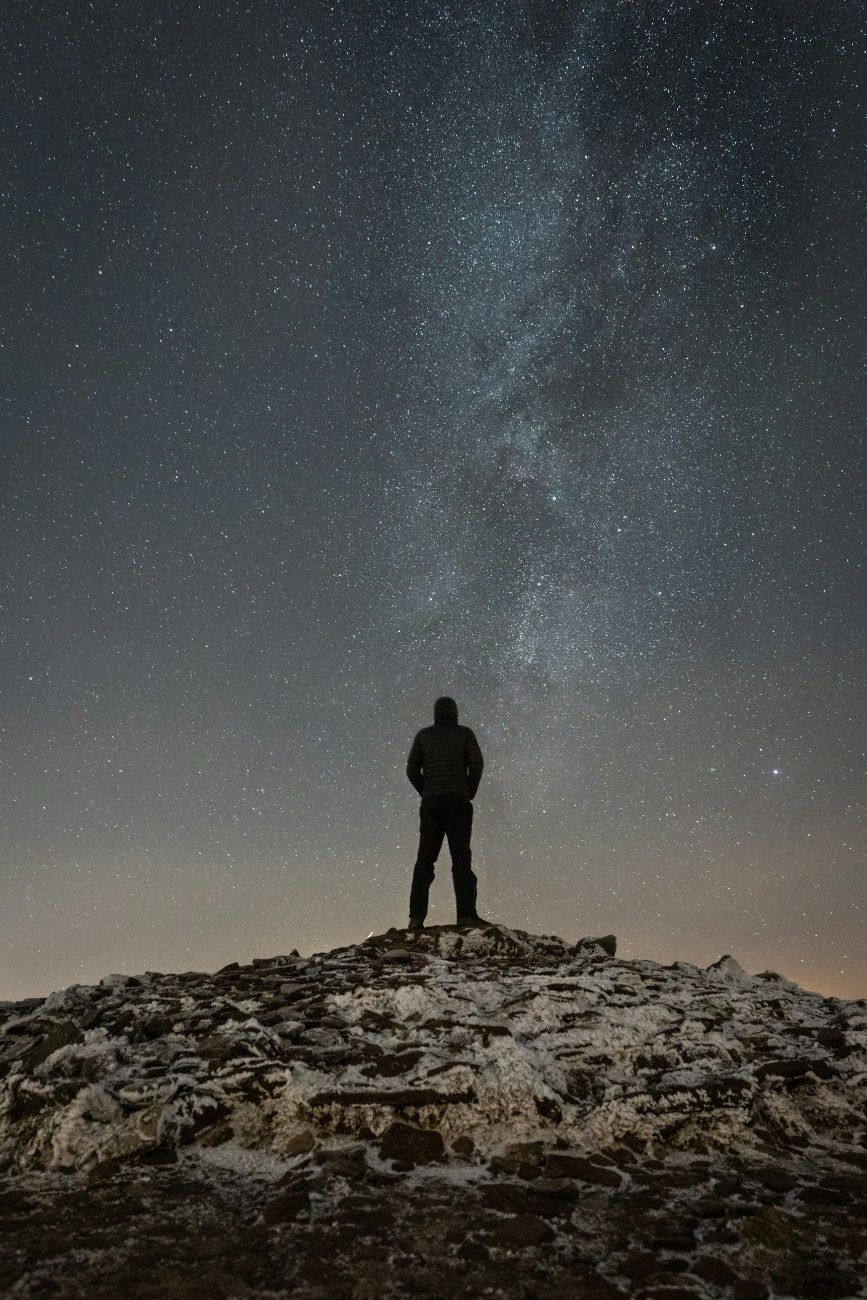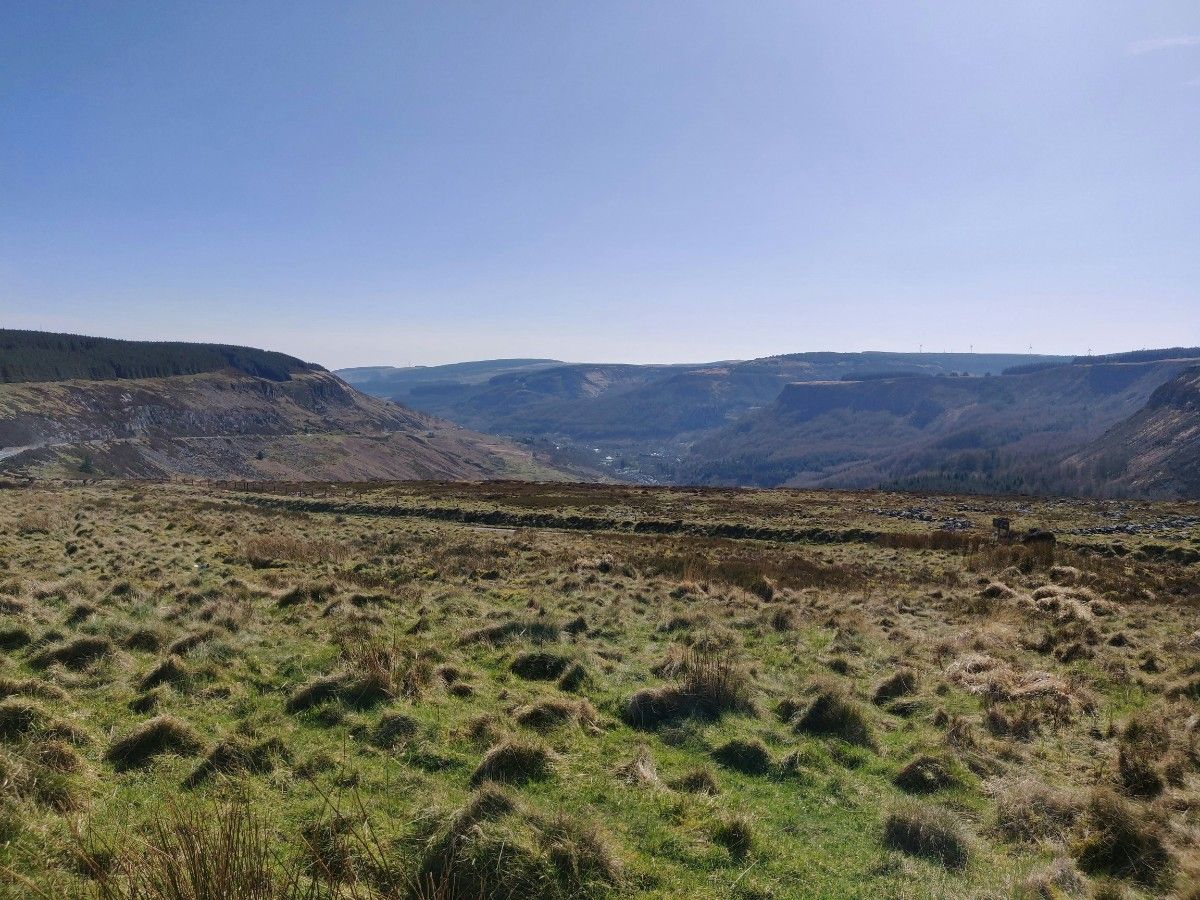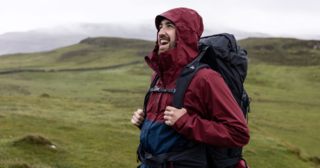Introduction to Brecon Beacons National Park
Nestled in the heart of South Wales, the Brecon Beacons National Park is a captivating destination that offers breathtaking landscapes, diverse wildlife, and a wealth of outdoor activities. Spanning across 520 square miles, this magnificent park encompasses rugged mountains, rolling hills, pristine rivers, and enchanting waterfalls. The Brecon Beacons, the park's namesake mountain range, dominate the skyline with their distinctive peaks, including the iconic Pen y Fan, the highest point in southern Britain.
The park's rich history dates back millennia, with evidence of human settlement from the Neolithic era. Throughout the centuries, the landscape has been shaped by glaciation, farming, and industry, creating a fascinating tapestry of natural and cultural heritage. Today, the Brecon Beacons National Park attracts visitors from around the world who seek to immerse themselves in its stunning beauty and engage in a variety of outdoor pursuits.
Whether you're an avid hiker, a nature enthusiast, or simply looking for a peaceful retreat, the Brecon Beacons National Park offers something for everyone. From challenging mountain trails to gentle riverside walks, from cosy cottages to luxury glamping experiences, this remarkable destination caters to all interests and preferences. As you explore the park's hidden gems and iconic landmarks, you'll discover a sense of tranquillity and connection with the natural world that is truly unparalleled.
In this comprehensive guide to the Brecon Beacons National Park, we'll delve into the park's most remarkable features, from its stunning waterfalls and scenic walks to its diverse accommodation options and local attractions. Whether you're planning a day trip, a weekend getaway, or an extended holiday, this guide will provide you with all the information you need to make the most of your visit to this extraordinary corner of Wales.
Exploring the Iconic Landscapes of the Brecon Beacons
The Brecon Beacons National Park is renowned for its diverse and spectacular landscapes, which have been shaped by millions of years of geological processes and human activity. At the heart of the park lie the Brecon Beacons themselves, a series of majestic mountain ranges that include some of the highest peaks in southern Britain. The most famous of these is Pen y Fan, which rises to an impressive 886 metres above sea level and offers panoramic views of the surrounding countryside.
The Brecon Beacons are characterised by their distinctive red sandstone cliffs, which contrast beautifully with the lush green valleys and sparkling rivers below. The range is divided into four main sections: the Black Mountain in the west, Fforest Fawr in the centre, the Brecon Beacons in the east, and the Black Mountains in the far east. Each section has its own unique character and attractions, from the remote wilderness of the Black Mountain to the popular hiking trails of the Brecon Beacons.
One of the most striking features of the Brecon Beacons National Park is its extensive network of rivers and streams, which have carved deep gorges and valleys into the landscape over millions of years. The park is home to several major rivers, including the Usk, the Wye, and the Tawe, as well as countless smaller tributaries that wind their way through the hills and forests.
These rivers are not only important habitats for a wide variety of wildlife, but they also provide opportunities for a range of water-based activities, such as kayaking, canoeing, and fishing. The Usk and Wye rivers, in particular, are renowned for their excellent fishing, with salmon and trout being among the most sought-after catches.
Another iconic landscape feature of the Brecon Beacons National Park is its waterfalls. The park is home to some of the most spectacular waterfalls in Wales, including the 90-foot-high Henrhyd Falls, the tallest waterfall in southern Britain, and the enchanting Sgwd yr Eira, which visitors can actually walk behind. These waterfalls are not only breathtakingly beautiful, but they also play an important role in the park's ecosystem, providing habitats for a variety of plant and animal species.
In addition to its mountains, rivers, and waterfalls, the Brecon Beacons National Park is also home to extensive areas of moorland, heathland, and ancient woodland. These habitats support a rich diversity of flora and fauna, including rare and endangered species such as the red kite, the peregrine falcon, and the Welsh clearwing moth.
The park's moorlands are particularly important for their populations of ground-nesting birds, such as the skylark and the curlew, while its ancient woodlands are home to a variety of rare and interesting plants, such as the mountain yew and the lemon-scented fern.
Exploring the iconic landscapes of the Brecon Beacons National Park is an unforgettable experience that allows visitors to connect with the natural world in a profound and meaningful way. Whether you're hiking to the summit of Pen y Fan, paddling along the tranquil waters of the River Usk, or simply admiring the beauty of a cascading waterfall, you'll be struck by the sheer majesty and diversity of this extraordinary destination.
Brecon Beacons Waterfalls: A Guide to the Park's Cascading Wonders
One of the most enchanting features of the Brecon Beacons National Park is its abundance of stunning waterfalls. Scattered throughout the park's lush valleys and hidden gorges, these cascading wonders range from gentle trickles to thundering torrents, each with its own unique character and charm.
Henrhyd Falls
Perhaps the most famous of the Brecon Beacons waterfalls is Henrhyd Falls, located in the Nant Llech valley near the village of Coelbren. At 90 feet (27 metres) high, Henrhyd Falls is the tallest waterfall in southern Britain, and a popular destination for visitors to the park. The waterfall is particularly impressive after heavy rainfall, when the River Nant Llech swells and the water cascades over the edge of the cliff in a dramatic curtain of white foam.
Visitors can access Henrhyd Falls via a short walking trail from the nearby National Trust car park. The trail leads through a beautiful woodland valley, with glimpses of the river and smaller waterfalls along the way. At the base of the main waterfall, there is a viewing platform where visitors can admire the falls and take photographs. For those feeling adventurous, it is possible to walk behind the waterfall itself, although caution should be exercised as the rocks can be slippery.
Sgwd yr Eira
Another must-see waterfall in the Brecon Beacons is Sgwd yr Eira, located on the River Hepste in the Waterfall Country area of the park. Sgwd yr Eira, which means "Falls of Snow" in Welsh, is a 40-foot (12-metre) high waterfall that is unique in that visitors can actually walk behind the curtain of water. A narrow path leads behind the falls, offering a truly immersive experience and a different perspective on the cascading water.
To reach Sgwd yr Eira, visitors can follow a circular walking trail from the nearby Porth yr Ogof car park. The trail takes in several other waterfalls along the way, including Sgwd Clun-Gwyn and Sgwd Isaf Clun-Gwyn, before reaching Sgwd yr Eira itself. The walk is relatively strenuous, with some steep sections and uneven terrain, but the stunning views and unique experience of walking behind the waterfall make it well worth the effort.
Blaen-y-Glyn Waterfalls
For those seeking a more secluded waterfall experience, the Blaen-y-Glyn Waterfalls are a hidden gem in the heart of the Brecon Beacons. Located in a remote valley near the village of Talybont-on-Usk, the Blaen-y-Glyn Waterfalls are a series of three cascades that tumble down a steep gorge, surrounded by ancient woodland.
To reach the waterfalls, visitors can follow a circular walking trail from the nearby Blaen-y-Glyn Isaf car park. The trail leads through a beautiful forest, with glimpses of the River Caerfanell along the way. The waterfalls themselves are not signposted, adding to their sense of seclusion and tranquillity. The trail can be challenging in places, with some steep and rocky sections, but the reward of discovering these hidden cascades is well worth the effort.
Other Waterfalls in the Brecon Beacons
In addition to these three iconic waterfalls, the Brecon Beacons National Park is home to many other cascading wonders, each with its own unique character and charm. Some other notable waterfalls include:
- Sgwd Gwladus (Lady Falls): A 30-foot (9-metre) high waterfall on the River Pyrddin, accessed via a walking trail from the Pontneddfechan car park.
- Sgwd Einion Gam: A series of cascades on the River Mellte, accessible via a walking trail from the Cwm Porth car park.
- Taf Fechan Falls: A series of small waterfalls and cascades on the River Taf Fechan, located near the town of Merthyr Tydfil.
Exploring the waterfalls of the Brecon Beacons National Park is a truly enchanting experience, offering a chance to connect with the natural world and discover some of the park's most beautiful and secluded spots. Whether you're an experienced hiker or simply looking for a peaceful place to relax and unwind, the park's cascading wonders are sure to leave a lasting impression.
Weather in the Brecon Beacons: What to Expect and How to Prepare
The weather in the Brecon Beacons National Park can be highly variable and unpredictable, with conditions changing rapidly throughout the day and across different areas of the park. Understanding the local climate and weather patterns is essential for anyone planning a visit to the Brecon Beacons, whether for a day trip, a weekend getaway, or an extended holiday.
Seasonal Variations
Like much of the UK, the Brecon Beacons experience four distinct seasons, each with its own characteristic weather patterns and conditions.
Spring (March to May): Spring in the Brecon Beacons can be a mixed bag, with mild temperatures and occasional showers interspersed with sunny spells. Average daytime temperatures range from 8°C to 15°C (46°F to 59°F), with nighttime temperatures dropping to around 3°C to 7°C (37°F to 45°F). Spring is a great time to visit the park, with the first signs of new growth appearing and the landscape coming to life after the winter months.
Summer (June to August): Summer is the warmest and driest season in the Brecon Beacons, with average daytime temperatures ranging from 16°C to 21°C (61°F to 70°F). However, temperatures can occasionally soar into the high 20s or even low 30s (upper 70s to mid-80s Fahrenheit) during heatwaves. Summer is a popular time for outdoor activities in the park, with long daylight hours and generally settled weather. However, it's important to be prepared for occasional showers and thunderstorms, particularly in the late afternoon and evening.
Autumn (September to November): Autumn in the Brecon Beacons can be a stunning time of year, with the changing colours of the leaves creating a spectacular display across the park's woodlands and valleys. Average daytime temperatures range from 9°C to 16°C (48°F to 61°F), with nighttime temperatures dropping to around 4°C to 9°C (39°F to 48°F). Autumn can be a wet and windy season, with occasional storms and heavy rainfall, particularly in October and November.
Winter (December to February): Winter in the Brecon Beacons can be cold and wet, with average daytime temperatures ranging from 4°C to 8°C (39°F to 46°F) and nighttime temperatures often dropping below freezing. Snow is relatively common in the higher elevations of the park, particularly on the peaks of the Brecon Beacons themselves. While winter can be a challenging time for outdoor activities, it can also be a magical season, with frosty mornings, clear starry nights, and the occasional dusting of snow transforming the landscape into a winter wonderland.
Local Weather Patterns
In addition to seasonal variations, the weather in the Brecon Beacons can be influenced by a number of local factors, including elevation, topography, and proximity to the coast.
The Brecon Beacons themselves, which rise to over 800 metres (2,600 feet) above sea level, can experience significantly different weather conditions to the surrounding lowlands. The higher elevations are generally colder, windier, and wetter than the valleys below, with the potential for sudden changes in weather conditions, particularly during the winter months.
The park's location in South Wales also means that it is influenced by the maritime climate of the nearby coast. This can bring milder temperatures and higher humidity compared to inland areas, as well as occasional sea fog and mist, particularly in the southern and western parts of the park.
Preparing for the Weather
Given the variable and unpredictable nature of the weather in the Brecon Beacons, it's important to be prepared for a range of conditions, regardless of the time of year you plan to visit.
Some key things to consider when preparing for the weather in the Brecon Beacons include:
Clothing: Layering is key to staying comfortable in the Brecon Beacons, with the ability to add or remove layers as needed. Waterproof and windproof outer layers are essential, as are sturdy, comfortable footwear with good grip for walking on uneven or slippery terrain.
Equipment: If you're planning on hiking or camping in the Brecon Beacons, it's important to have the right equipment to deal with any weather conditions you may encounter. This may include a high-quality waterproof tent, a warm sleeping bag, and a reliable stove for cooking.
Check the forecast: Before setting out on any outdoor activities in the Brecon Beacons, it's a good idea to check the local weather forecast and be prepared to adjust your plans if necessary. The Met Office provides detailed weather forecasts for the park, including mountain-specific forecasts for the Brecon Beacons themselves.
Be flexible: Given the unpredictable nature of the weather in the Brecon Beacons, it's important to be flexible and adaptable in your plans. If the weather takes a turn for the worse, be prepared to change your route, seek shelter, or even abandon your plans altogether if necessary.
By understanding the local climate and weather patterns, and being prepared for a range of conditions, visitors to the Brecon Beacons National Park can safely and comfortably enjoy all that this stunning natural wonderland has to offer, no matter the time of year.
Accommodation in the Brecon Beacons: From Cosy Cottages to Luxury Glamping
The Brecon Beacons National Park offers a wide range of accommodation options to suit all tastes, budgets, and preferences. Whether you're looking for a cosy cottage to curl up in after a day of hiking, a luxurious glamping experience immersed in nature, or a comfortable hotel with all the modern amenities, the Brecon Beacons has something to offer.
Holiday Cottages
One of the most popular accommodation options in the Brecon Beacons is the traditional holiday cottage. These self-catering properties range from cosy one-bedroom cottages perfect for a romantic getaway, to larger farmhouses and barn conversions that can accommodate families and groups of friends.
Many holiday cottages in the Brecon Beacons are located in picturesque villages and hamlets throughout the park, offering easy access to local amenities such as pubs, shops, and restaurants. Others are more remote, providing a secluded and peaceful retreat surrounded by nature.
Some notable holiday cottage providers in the Brecon Beacons include:
- Brecon Beacons Holiday Cottages: A locally-based company offering a wide selection of self-catering cottages throughout the park, from cosy retreats to larger properties for groups.
- Sykes Holiday Cottages: A national provider with a great selection of cottages in the Brecon Beacons, ranging from traditional stone cottages to modern apartments.
- National Trust Holiday Cottages: The National Trust owns and manages several holiday cottages in the Brecon Beacons, many of which are located in historic buildings or on working farms.
Hotels and B&Bs
For those who prefer a more traditional hotel experience, the Brecon Beacons National Park has a range of options to suit all budgets and preferences. From cosy B&Bs in historic towns to larger hotels with modern amenities, there is something to suit all tastes.
Some notable hotels and B&Bs in the Brecon Beacons include:
- The Bear Hotel, Crickhowell: A historic coaching inn located in the charming town of Crickhowell, offering comfortable rooms and excellent dining options.
- Peterstone Court Hotel & Spa, Llanhamlach: A luxury country house hotel located just outside the park boundary, offering elegant rooms, fine dining, and a spa with stunning views of the surrounding countryside.
- The Felin Fach Griffin, Felin Fach: A cosy pub with rooms located in the heart of the Brecon Beacons, offering comfortable accommodation and excellent food and drink.
Glamping and Camping
For those who want to immerse themselves in nature and experience a more unconventional accommodation option, the Brecon Beacons National Park offers a range of glamping and camping experiences.
Glamping, or glamorous camping, has become increasingly popular in recent years, offering the chance to enjoy the great outdoors without sacrificing comfort or convenience. Some notable glamping options in the Brecon Beacons include:
- Hidden Valley Yurts, Llanishen: A collection of luxurious yurts set in a secluded valley, each with its own private bathroom, kitchen, and wood-burning stove.
- Argoed Barns, Libanus: A working farm offering a range of glamping options, including a converted barn, a shepherd's hut, and a vintage caravan.
- Pwll Caerog Farm, Blaenffos: A scenic campsite offering a range of glamping options, including bell tents, pods, and a converted railway carriage.
For those who prefer a more traditional camping experience, the Brecon Beacons National Park has a range of campsites to choose from, many of which offer stunning views of the surrounding countryside. Some notable campsites include:
- Pencelli Castle Caravan & Camping Park, Pencelli: A family-friendly campsite located in the heart of the Brecon Beacons, offering pitches for tents, caravans, and motorhomes.
- Cwmdu Campsite, Cwmdu: A small, secluded campsite located in a peaceful valley, offering basic facilities and a chance to escape from the hustle and bustle of modern life.
- Grawen Caravan & Camping Park, Merthyr Tydfil: A scenic campsite located on the edge of the Brecon Beacons, offering pitches for tents, caravans, and motorhomes, as well as a range of on-site facilities.
When choosing accommodation in the Brecon Beacons National Park, it's important to consider factors such as location, budget, and the type of experience you're looking for. Whether you're seeking a cosy cottage, a luxurious glamping experience, or a traditional camping adventure, the Brecon Beacons has something to offer for everyone.
Activities and Adventures in the Brecon Beacons National Park
The Brecon Beacons National Park is a paradise for outdoor enthusiasts, offering a wide range of activities and adventures to suit all interests and abilities. From hiking and mountain biking to stargazing and wildlife watching, there is no shortage of ways to explore and enjoy this stunning natural wonderland.
Walking and Hiking
One of the most popular activities in the Brecon Beacons National Park is walking and hiking. With over 2,000 kilometres (1,200 miles) of public footpaths and trails, the park offers something for walkers of all abilities, from gentle riverside strolls to challenging mountain hikes.
One of the most iconic walks in the park is the ascent of Pen y Fan, the highest peak in southern Britain. The circular route from the Storey Arms car park is a challenging but rewarding hike, offering stunning views of the surrounding countryside from the summit.
Other notable walks in the Brecon Beacons include:
- The Beacons Way: A 152-kilometre (95-mile) long-distance trail that traverses the length of the park, passing through some of its most scenic and remote areas.
- The Waterfalls Walk: A circular walk from the Gwaun Hepste car park that takes in some of the park's most spectacular waterfalls, including Sgwd yr Eira and Sgwd Clun-Gwyn.
- The Brecon and Monmouthshire Canal Walk: A gentle walk along the historic canal towpath, passing through picturesque villages and offering stunning views of the surrounding hills.
Mountain Biking
The Brecon Beacons National Park is also a popular destination for mountain biking, with a network of trails and routes to suit all abilities. From gentle forest tracks to challenging mountain paths, there is something for every level of rider.
One of the most popular mountain biking areas in the park is the Brecon Beacons Mountain Centre, located near the town of Brecon. The centre offers a range of waymarked trails, as well as bike hire and guided rides for those who are new to the sport.
Other notable mountain biking areas in the Brecon Beacons include:
- Cwmcarn Forest: A purpose-built mountain biking centre located on the southeastern edge of the park, offering a range of trails for all abilities.
- The Gap: A challenging off-road route that traverses the gap between the Brecon Beacons and the Black Mountains, offering stunning views and exhilarating descents.
- The Taff Trail: A long-distance cycling route that follows the River Taff from Cardiff to Brecon, passing through the heart of the Brecon Beacons National Park.
Stargazing
The Brecon Beacons National Park is one of the best places in the UK for stargazing, thanks to its low levels of light pollution and clear night skies. The park was designated an International Dark Sky Reserve in 2013, recognising its exceptional quality of starry nights and commitment to protecting and preserving its dark skies.
There are several designated Dark Sky Discovery Sites throughout the park, including the National Park Visitor Centre, the Usk Reservoir, and the Crai Reservoir. These sites offer excellent views of the night sky, with no need for specialised equipment or prior experience.
The park also hosts regular stargazing events and activities, including guided walks, astronomy talks, and astrophotography workshops. These events are a great way to learn more about the night sky and experience the magic of stargazing in a stunning natural setting.
Wildlife Watching
The Brecon Beacons National Park is home to a diverse array of wildlife, from red kites and peregrine falcons to otters and wild ponies. The park's varied habitats, including forests, moorland, and rivers, support a wide range of plant and animal species, many of which are rare or endangered.
One of the best places to spot wildlife in the park is the Usk Valley, which is home to a thriving population of red kites. These majestic birds of prey can often be seen soaring overhead or perched on nearby trees, and the park offers several guided walks and safari experiences to help visitors spot them.
Other notable wildlife watching experiences in the Brecon Beacons include:
- The Monmouthshire and Brecon Canal: A great place to spot waterbirds such as herons, kingfishers, and moorhens, as well as otters and water voles.
- The Craig y Cilau National Nature Reserve: A remote and rugged area of the park that is home to a variety of rare and interesting plant and animal species, including the whitebeam tree and the lesser horseshoe bat.
- The Carmarthen Fans: A remote and wild area of the park that is home to a variety of upland birds such as red grouse, curlew, and skylark.
Whether you're an experienced outdoors enthusiast or simply looking for a peaceful escape from the hustle and bustle of modern life, the Brecon Beacons National Park offers a wealth of activities and adventures to suit all interests and abilities. From hiking and mountain biking to stargazing and wildlife watching, this stunning natural wonderland is a truly unforgettable destination.
The Culture and History of the Brecon Beacons National Park
The Brecon Beacons National Park is not only a place of outstanding natural beauty but also a region with a rich and fascinating cultural and historical heritage. From prehistoric monuments to medieval castles and industrial landmarks, the park is full of stories and traditions that have shaped the landscape and the lives of its inhabitants over the centuries.
Prehistoric and Roman Sites
The Brecon Beacons National Park has been inhabited by humans for thousands of years, with evidence of prehistoric settlements and monuments scattered throughout the landscape. One of the most impressive prehistoric sites in the park is the Maen Llia standing stone, a Bronze Age monument that stands over 3.7 metres (12 feet) tall and is thought to have been used for ceremonial or astronomical purposes.
Another notable prehistoric site in the park is the Pen y Crug hillfort, which dates back to the Iron Age and offers stunning views of the surrounding countryside. The hillfort was likely used as a defensive settlement and a centre for trade and commerce, and its well-preserved ramparts and ditches provide a fascinating glimpse into life in the area over 2,000 years ago.
The Brecon Beacons National Park was also an important area during the Roman period, with several Roman roads and settlements located within its boundaries. The most notable Roman site in the park is the Y Gaer Roman fort near the town of Brecon, which was built in the 1st century AD and was an important military outpost and administrative centre.
Medieval Castles and Churches
The Brecon Beacons National Park is home to several impressive medieval castles and churches, many of which have played important roles in the history and culture of the region. One of the most famous castles in the park is Carreg Cennen Castle, a ruined 13th-century fortress that sits atop a steep limestone crag and offers stunning views of the surrounding countryside.
Another notable castle in the park is Crickhowell Castle, a Norman fortress that was built in the 12th century and played an important role in the medieval history of the region. The castle was later converted into a grand country house, and its picturesque ruins and gardens are now a popular visitor attraction.
The Brecon Beacons National Park is also home to several historic churches and abbeys, many of which date back to the medieval period. One of the most impressive is Llanthony Priory, a ruined 12th-century Augustinian monastery that sits in a remote and peaceful valley surrounded by the Black Mountains.
Industrial Heritage
The Brecon Beacons National Park played an important role in the industrial history of Wales, particularly during the 18th and 19th centuries. The park was a major centre for iron production, with several ironworks and foundries located within its boundaries, including the Clydach Ironworks and the Ynyscedwyn Ironworks.
The park was also an important area for coal mining, with several collieries operating in the region throughout the 19th and early 20th centuries. The most notable of these was the Blaenavon Coalfield, which was once one of the most productive coalfields in the world and is now a UNESCO World Heritage Site.
Today, the industrial heritage of the Brecon Beacons National Park is celebrated and preserved through a range of museums, heritage centres, and visitor attractions. These include the Blaenavon World Heritage Centre, which tells the story of the town's industrial past, and the Brecon Mountain Railway, a heritage steam railway that runs through the heart of the park and offers stunning views of the surrounding countryside.
Cultural Traditions and Events
The Brecon Beacons National Park is a region with a rich and vibrant cultural heritage, with a range of traditional customs, festivals, and events that celebrate the unique character and history of the area. One of the most famous cultural traditions associated with the park is the Welsh language, which is still widely spoken in many communities throughout the region.
The park is also home to several important cultural festivals and events, including the Brecon Jazz Festival, which takes place every August and attracts jazz musicians and fans from around the world, and the Green Man Festival, a popular music and arts festival that takes place in the stunning setting of the Glanusk Estate.
Other notable cultural events in the Brecon Beacons National Park include the Abergavenny Food Festival, which celebrates the best of Welsh and British food and drink, and the Hay Festival, a world-famous literary festival that takes place in the charming town of Hay-on-Wye on the edge of the park.
In conclusion, the Brecon Beacons National Park is a region with a rich and fascinating cultural and historical heritage that spans thousands of years. From prehistoric monuments and Roman settlements to medieval castles and industrial landmarks, the park is full of stories and traditions that have shaped the landscape and the lives of its inhabitants over the centuries. Whether you're interested in history, culture, or simply soaking up the unique character and atmosphere of this beautiful part of Wales, the Brecon Beacons National Park has something to offer for everyone.
Why the Brecon Beacons National Park is a Must-Visit Destination
The Brecon Beacons National Park is truly a special and unique destination that offers something for everyone. From its stunning natural beauty and diverse landscapes to its rich cultural and historical heritage, the park is a place of endless discovery and adventure.
For outdoor enthusiasts, the park is a paradise, with a wide range of activities and adventures to suit all interests and abilities. Whether you're a seasoned hiker looking for a challenging mountain trek or a casual walker seeking a peaceful riverside stroll, the Brecon Beacons has something to offer. The park's extensive network of trails and paths, combined with its stunning scenery and varied terrain, make it a true haven for walkers, cyclists, and nature lovers of all kinds.
But the Brecon Beacons National Park is more than just a place for outdoor pursuits. It is also a region with a rich and fascinating history and culture that spans thousands of years. From prehistoric monuments and Roman settlements to medieval castles and industrial landmarks, the park is full of stories and traditions that have shaped the landscape and the lives of its inhabitants over the centuries.
What's more, the Brecon Beacons National Park is a place of exceptional natural beauty, with a diverse range of habitats and landscapes that are home to a wide variety of plant and animal species. From the rugged peaks of the Brecon Beacons themselves to the lush valleys and rushing rivers of the park's lowlands, there is always something new and exciting to discover.
One of the things that sets the Brecon Beacons National Park apart from other destinations is its commitment to sustainability and environmental conservation. The park is a designated International Dark Sky Reserve, recognising its exceptional quality of starry nights and its efforts to protect and preserve its dark skies for future generations. The park is also home to several important conservation projects and initiatives, including efforts to protect rare and endangered species such as the red kite and the Silurian moth.
But perhaps the most compelling reason to visit the Brecon Beacons National Park is the sense of peace, tranquillity, and connection to nature that it offers. In a world that is increasingly fast-paced, noisy, and disconnected from the natural world, the park provides a much-needed escape and a chance to slow down, unplug, and reconnect with the beauty and simplicity of the great outdoors.
Whether you're looking for an action-packed adventure or a peaceful retreat, the Brecon Beacons National Park has something to offer. From its cosy cottages and luxurious glamping sites to its friendly pubs and welcoming communities, the park is a place where you can truly feel at home and immerse yourself in the unique character and charm of this beautiful part of Wales.
So why not plan a visit to the Brecon Beacons National Park and discover for yourself why this stunning destination is a true gem of the British countryside? Whether you're a first-time visitor or a seasoned explorer, the park is sure to leave a lasting impression and provide memories that will last a lifetime.
Related Articles

Let us know you agree to cookies
We use marketing, analytical and functional cookies as well as similar technologies to give you the best experience. Third parties, including social media platforms, often place tracking cookies on our site to show you personalised adverts outside of our website.
We store your cookie preferences for two years and you can edit your preferences via ‘manage cookies’ or through the cookie policy at the bottom of every page. For more information, please see our cookie policy.

